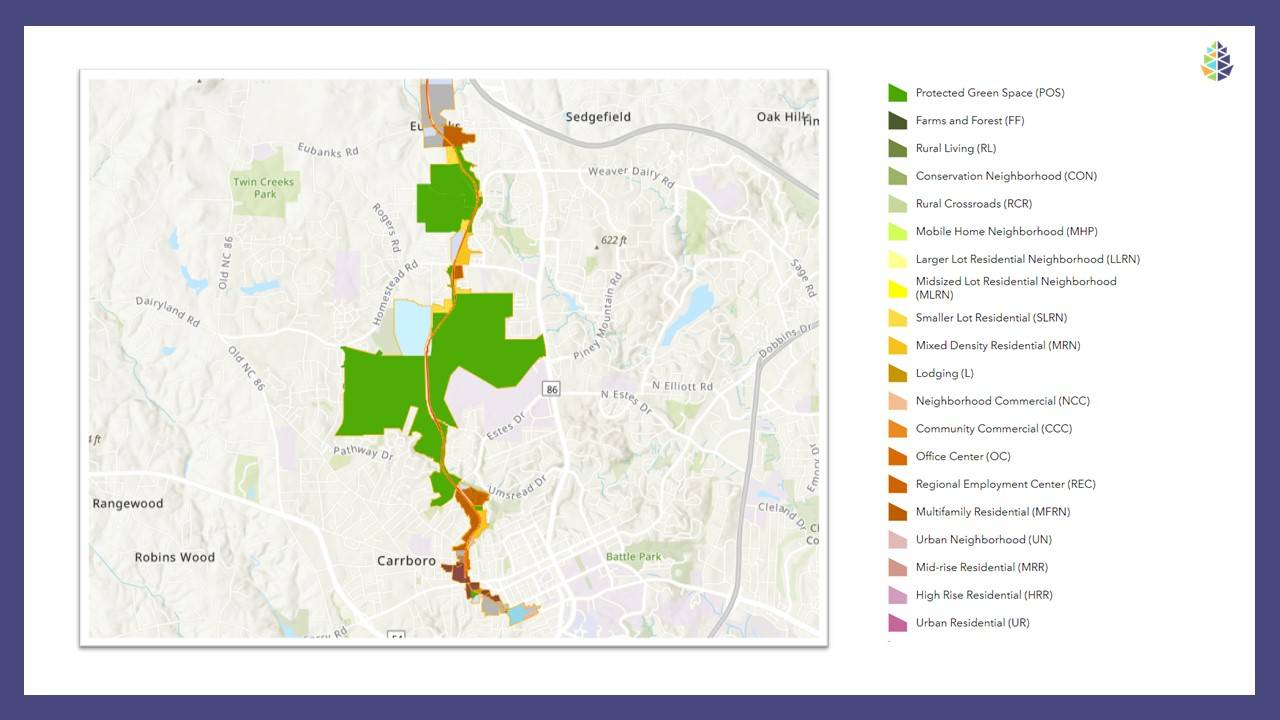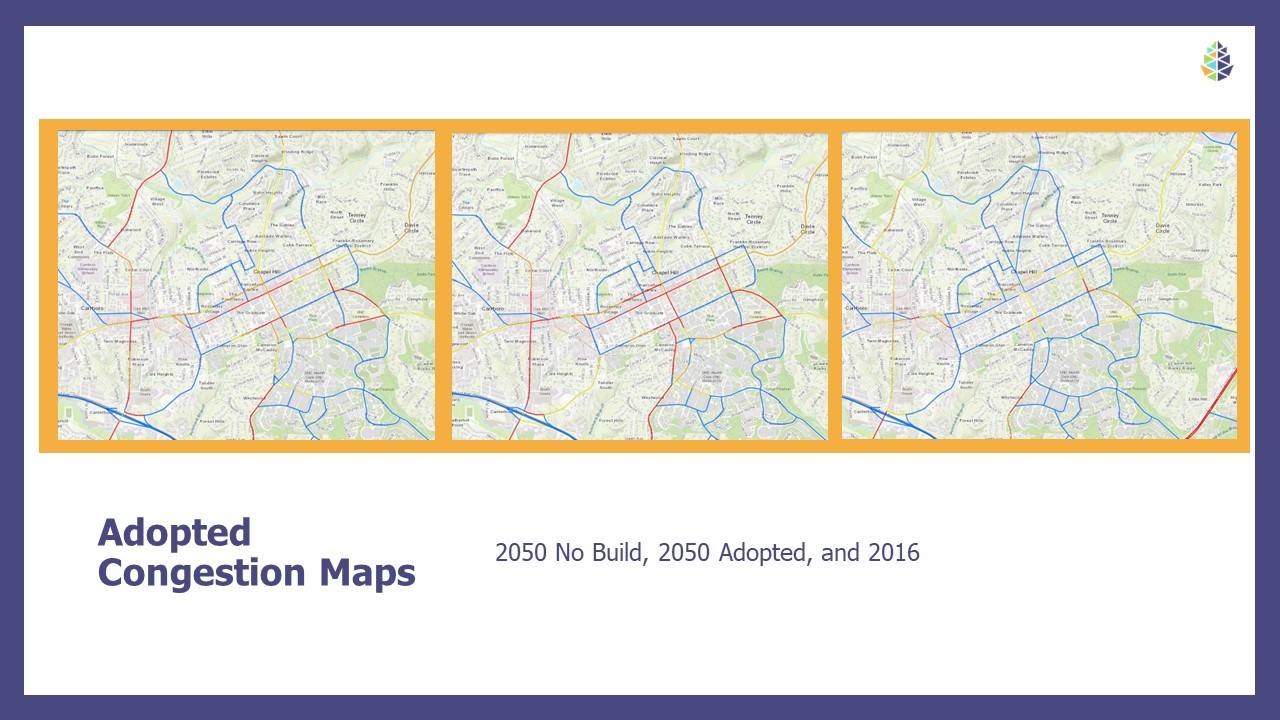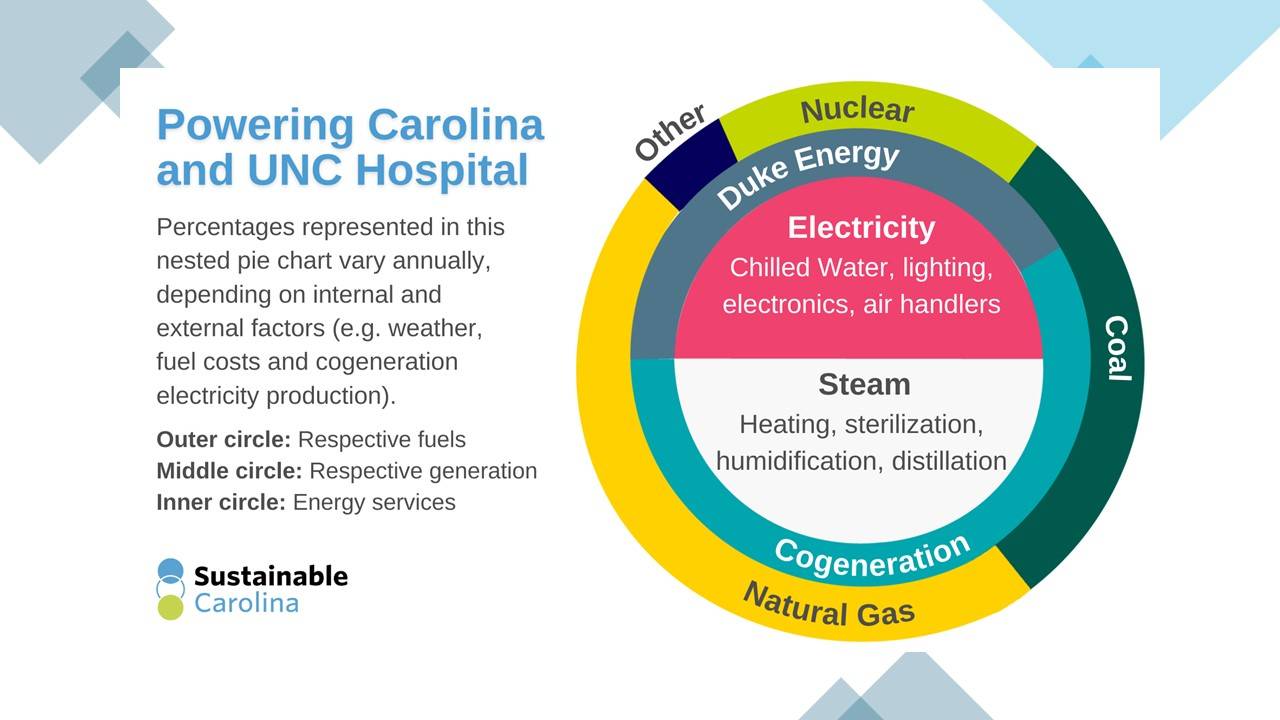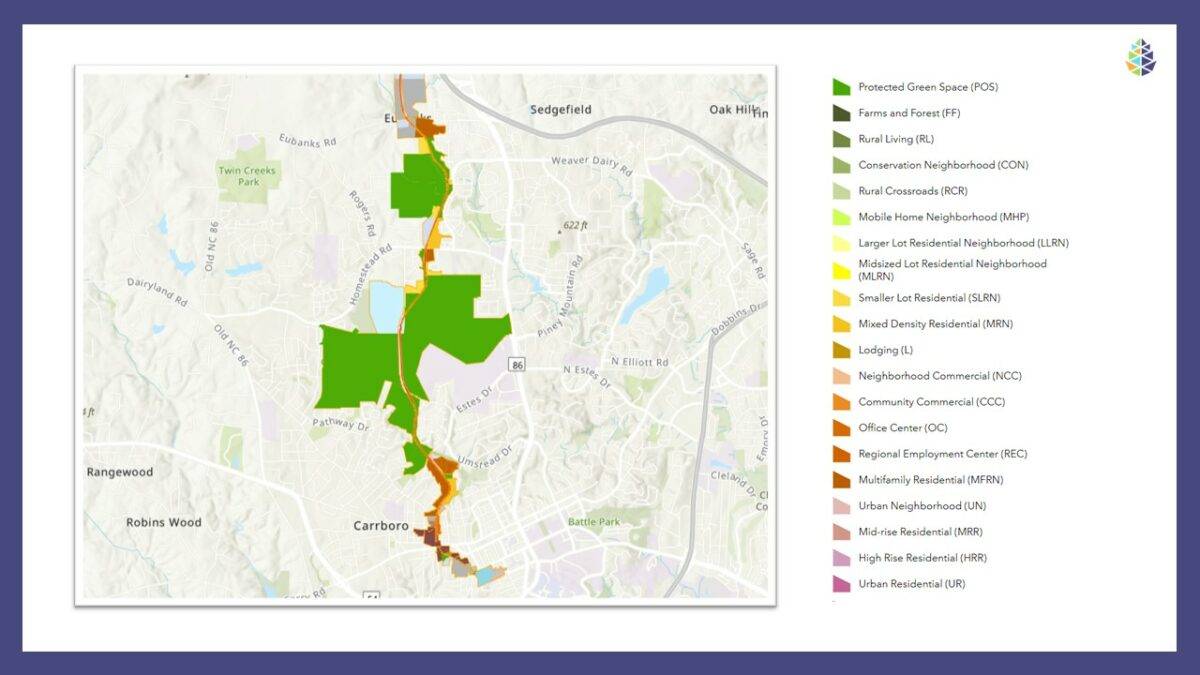Local governments have to think about multiple time spans simultaneously: there’s short-term planning, medium-term planning, and long-term generational planning.

Short-term or immediate planning means exactly what it says: decisions that affect a community over the next 3-5 years. Chapel Hill’s Town Council considers strategic focus areas and goals for two-year periods. These can include things like continuing the implementation of a climate action plan or working on employee compensation. Short, meaningful items that can be enacted quickly.
Medium-term planning might involve grant planning or laying the groundwork for a longer term plan. And long-term planning thinks beyond the present and into the future: what do we want our communities to look like a generation from now? What decisions do we make now that lay the groundwork for that vision? And how do we colloborate with others on that very long-range planning?
Which brings us to last night’s Carrboro Town Council meeting, where council members were asked to formalize a partnership on the co-gen rail line project. We learned there’s been an informal working group that’s met for the past year to talk about what’s possible when the university transitions away from coal and doesn’t need to use the railroad line that goes through Chapel Hill and Carrboro to the university coal-gen steam and power plant.
Who spoke last night?
Graig Meyer, NC State Senator (District 23)
Mike Pieler, Director of UNC Institute of the Environment and Chief Sustainability Officer at UNC
Alana Keegan, Local Government Services Director, Central Pines Regional Council
What did they say?
Last night, Meyer described how the group wants to formalize and apply for grant money to do a full research study on what could be possible and desirable along the rail line once it’s converted into a rails-to-trail type greenway.
Meyer described all of the contiguous plots of land that touch the rail line – from downtown Carrboro up to Carolina North past the Greene Tract and pockets in the northern parts of the county before it ends near Durham and Burlington.

“It would be such a great cultural opportunity to have this as a recreational facility as well as all of the opportunities that open up economic[ally],” he said. “This is some years off.”
Keegan described the land along the corridor, and the “immense potential” in the future. She also presented three maps that show potential future congestion in the area. Thinking about how to get cars off the road in the future – and provide people with alternative transportation options – would help with that.

Pieler talked about the fuels that UNC and the hospital use. “When we talk about the energy transition, we’re talking about getting to a place where the outer ring feels more modern.”

Is this an awesome project?
Yes, we’re really happy it’s being studied. It’s great to think big and think about what could be.
What’s the timeline on this?
This is the big question.
This is a project that’s years and years away at best, because it would require the university to transition the cogeneration plant away from a fuel that is shipped by rail. They don’t have a plan for that.
But the idea on the table is a good one: it’s that the Central Pines Regional Council – a voluntary association of regional local governments – would help coordinate the local governments, UNC, and the Southern Environmental Law Center in doing some very long-range research and planning, recognizing that the eventual decommissioning of the rail line is nowhere near certain and many years off. At best.
Greenways and pedestrian infrastructure are additive
A greenway along the rail corridor would be great. We are all for that – it would be transformative for our region. But it still wouldn’t serve the same areas of the community that Carrboro’s Bolin Creek greenway will or the Estes extension of the Chapel Hill Bolin Creek greenway will. Often, the argument is made that we should be doing the rail trail instead of these greenways.
We should be doing both projects and more. (You can why we support the Bolin Creek Greenway here. It targets a different geographic area and will be built much sooner.) Greenways and pedestrian infrastructure are additive, and adding new paths and access points ensure that everyone everywhere will be able to use them in the future.
Thinking about our community in the very long term, as the rails-to-trails project does, means thinking about how people will get around a generation or two from now. And that’s great.
We should be planning on that time scale, especially with regional partners. We’re looking forward to seeing how this progresses.

